For almost half a century, scientists have subscribed to the theory that when a star comes to the end of its life-cycle, it will undergo a gravitational collapse. At this point, assuming enough mass is present, this collapse will trigger the formation of a black hole. Knowing when and how a black hole will form has long been something astronomers have sought out.
And why not? Being able to witness the formation of black hole would not only be an amazing event, it would also lead to a treasure trove of scientific discoveries. And according to a recent study by a team of researchers from Ohio State University in Columbus, we may have finally done just that.
The research team was led by Christopher Kochanek, a Professor of Astronomy and an Eminent Scholar at Ohio State. Using images taken by the Large Binocular Telescope (LBT) and Hubble Space Telescope (HST), he and his colleagues conducted a series of observations of a red supergiant star named N6946-BH1.
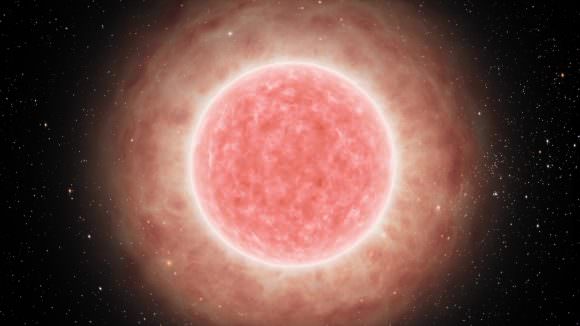
To break the formation process of black holes down, according to our current understanding of the life cycles of stars, a black hole forms after a very high-mass star experiences a supernova. This begins when the star has exhausted its supply of fuel and then undergoes a sudden loss of mass, where the outer shell of the star is shed, leaving behind a remnant neutron star.
This is then followed by electrons reattaching themselves to hydrogen ions that have been cast off, which causes a bright flareup to occur. When the hydrogen fusing stops, the stellar remnant begins to cool and fade; and eventually the rest of the material condenses to form a black hole.
However, in recent years, several astronomers have speculated that in some cases, stars will experience a failed supernova. In this scenario, a very high-mass star ends its life cycle by turning into a black hole without the usual massive burst of energy happening beforehand.
As the Ohio team noted in their study – titled “The search for failed supernovae with the Large Binocular Telescope: confirmation of a disappearing star” – this may be what happened to N6946-BH1, a red supergiant that has 25 times the mass of our Sun located 20 million light-years from Earth.
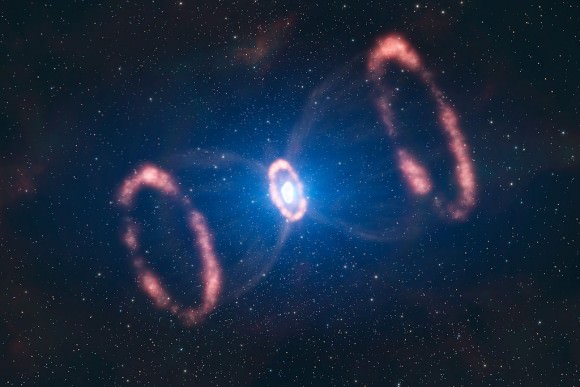
Using information obtained with the LBT, the team noted that N6946-BH1 showed some interesting changes in its luminosity between 2009 and 2015 – when two separates observations were made. In the 2009 images, N6946-BH1 appears as a bright, isolated star. This was consistent with archival data taken by the HST back in 2007.
However, data obtained by the LBT in 2015 showed that the star was no longer apparent in the visible wavelength, which was also confirmed by Hubble data from the same year. LBT data also showed that for several months during 2009, the star experienced a brief but intense flare-up, where it became a million times brighter than our Sun, and then steadily faded away.
They also consulted data from the Palomar Transit Factory (PTF) survey for comparison, as well as observations made by Ron Arbour (a British amateur astronomer and supernova-hunter). In both cases, the observations showed evidence of a flare during a brief period in 2009 followed by a steady fade.
In the end, this information was all consistent with the failed supernovae-black hole model. As Prof. Kochanek, the lead author of the group’s paper – – told Universe Today via email:
“In the failed supernova/black hole formation picture of this event, the transient is driven by the failed supernova. The star we see before the event is a red supergiant — so you have a compact core (size of ~earth) out the hydrogen burning shell, and then a huge, puffy extended envelope of mostly hydrogen that might extend out to the scale of Jupiter’s orbit. This envelope is very weakly bound to the star. When the core of the star collapses, the gravitational mass drops by a few tenths of the mass of the sun because of the energy carried away by neutrinos. This drop in the gravity of the star is enough to send a weak shock wave through the puffy envelope that sends it drifting away. This produces a cool, low-luminosity (compared to a supernova, about a million times the luminosity of the sun) transient that lasts about a year and is powered by the energy of recombination. All the atoms in the puffy envelope were ionized — electrons not bound to atoms — as the ejected envelope expands and cools, the electrons all become bound to the atoms again, which releases the energy to power the transient. What we see in the data is consistent with this picture.”
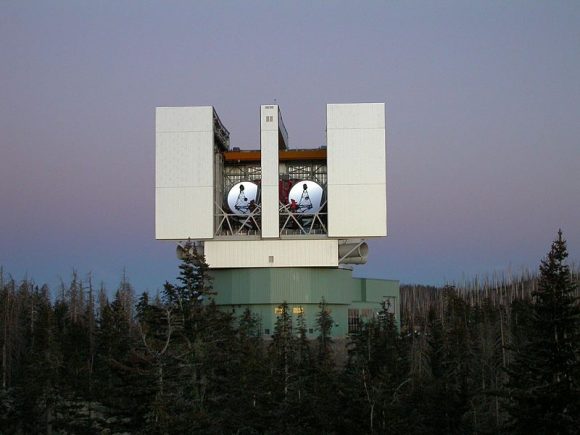
Naturally, the team considered all available possibilities to explain the sudden “disappearance” of the star. This included the possibility that the star was shrouded in so much dust that its optical/UV light was being absorbed and re-emitted. But as they found, this did not accord with their observations.
“The gist is that no models using dust to hide the star really work, so it would seem that whatever is there now has to be much less luminous then that pre-existing star.” Kochanek explained. “Within the context of the failed supernova model, the residual light is consistent with the late time decay of emission from material accreting onto the newly formed black hole.”
Naturally, further observations will be needed before we can know whether or not this was the case. This would most likely involve IR and X-ray missions, such as the Spitzer Space Telescope and the Chandra X-ray Observatory, or one of he many next-generation space telescopes to be deployed in the coming years.
In addition, Kochanek and his colleagues hope to continue monitoring the possible black hole using the LBT, and by re-visiting the object with the HST in about a year from now. “If it is true, we should continue to see the object fade away with time,” he said.
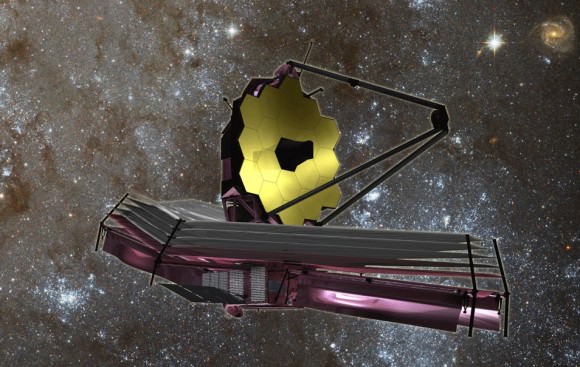
Needless to say, if true, this discovery would be an unprecedented event in the history of astronomy. And the news has certainly garnered its share of excitement from the scientific community. As Avi Loeb – a professor of astronomy at Harvard University – expressed to Universe Today via email:
“The announcement on the potential discovery of a star that collapsed to make a black hole is very interesting. If true, it will be the first direct view of the delivery room of a black hole. The picture is somewhat messy (like any delivery room), with uncertainties about the properties of the baby that was delivered. The way to confirm that a black hole was born is to detect X-rays.
“We know that stellar-mass black holes exist, most recently thanks to the discovery of gravitational waves from their coalescence by the LIGO team. Almost eighty years ago Robert Oppenheimer and collaborators predicted that massive stars may collapse to black holes. Now we might have the first direct evidence that the process actually happens in nature.
But of course, we must remind ourselves that given its distance, what we could be witnessing with N6946-BH1 happened 20 million years ago. So from the perspective of this potential black hole, its formation is old news. But to us, it could be one of the most groundbreaking observations in the history of astronomy.
Much like space and time, significance is relative to the observer!
Further Reading: arXiv

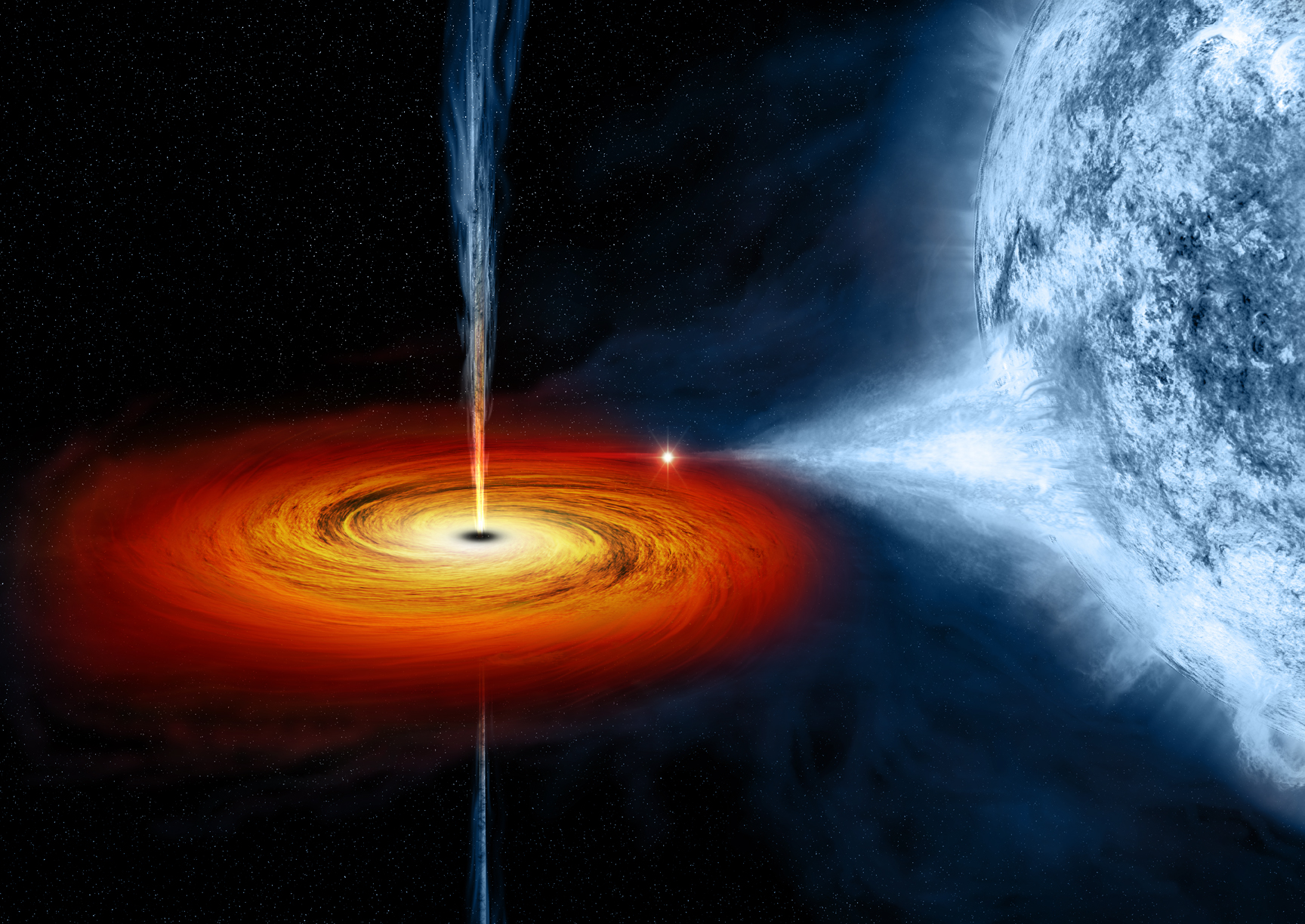
quote: Much like space and time, significance is relative to the observer!
because it deserves it. 😉
I think you are mixing two tales of how black holes form??
The normal break down of paths separates high mass stars forming either neutron stars of black holes depending on what the supernova process does. You seem to be saying another tale is first a neutron star and then a black hole forms as material from the failed supernova falls on top of the neutron star?
Also it might be worth it to distinguish between a failed supernova and a supernova imposter (like the 1840’s Eta Carina event.)
I totally share your confusion!
Yes and no, both pathways – direct and two stage collapse – seems to fit in the current consensus core collapse model. [Try to write that three times fast!]
“Some material from the outer envelope falls back onto the neutron star, and for cores beyond about 8 M? there is sufficient fallback to form a black hole. This fallback will reduce the kinetic energy of the explosion and the mass of expelled radioactive material, but in some situations it may also generate relativistic jets that result in a gamma-ray burst or an exceptionally luminous supernova.” [ https://en.wikipedia.org/wiki/Supernova#Core_collapse ]
“When the core of the star collapses, the gravitational mass drops by a few tenths of the mass of the sun because of the energy carried away by neutrinos.”
Hee! That’s got to be the best sentence I am going to read all week.
I think that this story about the origin of black holes illogical and does not correspond to the laws of nature.
In the material universe -Energy entity (MEEU), all created and disappears in the chain of processes that are defined and according to them it unfolds merit order.
A black hole is a place of disappearance of matter and it can not be a space where anything is formed, nor can come out of it even photon.
The processes of forming the closed chain and the disappearance of the following substances:
Matter is formed from the ether that fills infinite universe is not expanding because the infinite. This is achieved by a high vibration. When the strings are formed from the ether, in three spatial directions in whose sections of materialized in the form of quarks and gluons, and quarks, which are held together. In the following processes leads to thermodynamic changes when you are quark gluon plasma formed subatomic particles, when in the center of the body forming neutrons with huge pressure and temperature and the resulting explosion of these neutron stars. That are formed from the protons, electrons, neutrons, and remains part of the molecules of the various elements are formed, primarily hydrogen and helium later. Due to the gravity these dresses gases are collected pretending celestial bodies, which in turn are distributed in stellar systems, galaxies and clusters of galaxies, as long as a certain area of ??the universe does not form a critical mass and gravity ,
It is likely wasted as in so many cases of people galloping false claims without references, but I should point out that this is the case here and none of this is science or of any relevance to it.
For example, the “ether/aether” was rejected for ever as incompatible with physics laws by relativity theory a century ago. (For ever, since we now know it is eternalized in the standard particle model which is robust fact underlying all of everyday physics.) And so on.
when the matter is once again transformed into ether and returns in the initial state. These are black holes.
Because of BH nothing can escape, black holes are no longer MEEU, where government entities spiritual universe (SEU), as well as immense power to create everything in MEEU.
With this understanding of the universe, it is possible to find any true cause of any phenomenon in MEEU.
This current interpretation is totally wrong and why science has no evidence or no solutions.
Interesting, thanks! The current core collapse model is more complicated into several possible branches, it would perhaps clear up some confusion to mention that. [ https://en.wikipedia.org/wiki/Supernova#Core_collapse ]
And this:
“But of course, we must remind ourselves that given its distance, what we could be witnessing with N6946-BH1 happened 20 million years ago. So from the perspective of this potential black hole, its formation is old news. But to us, it could be one of the most groundbreaking observations in the history of astronomy.
Much like space and time, significance is relative to the observer!”
That confuses relativity (observers experiences can’t generally be compared, only physical laws) – which experts like astronomers use – with (mainly emotional) relevance for individuals. Perhaps to make a joke, but a potential source for confusion for readers!
Didn’t it occur to anyone there’s a more reasonable explanation for why the star is no longer seen in visible wavelengths?
Clearly they built a Dyson sphere in the last five years… 🙂
Ah, you mean 20,000,000 million years ago, they built a Dyson Sphere in a five-year period, right?